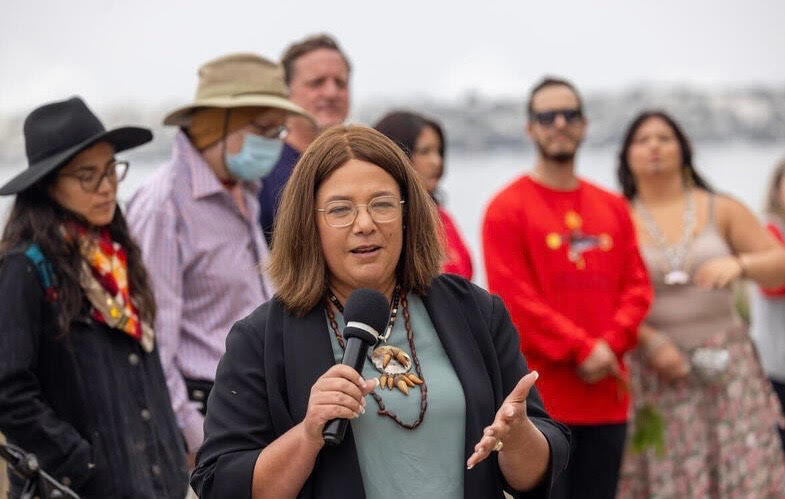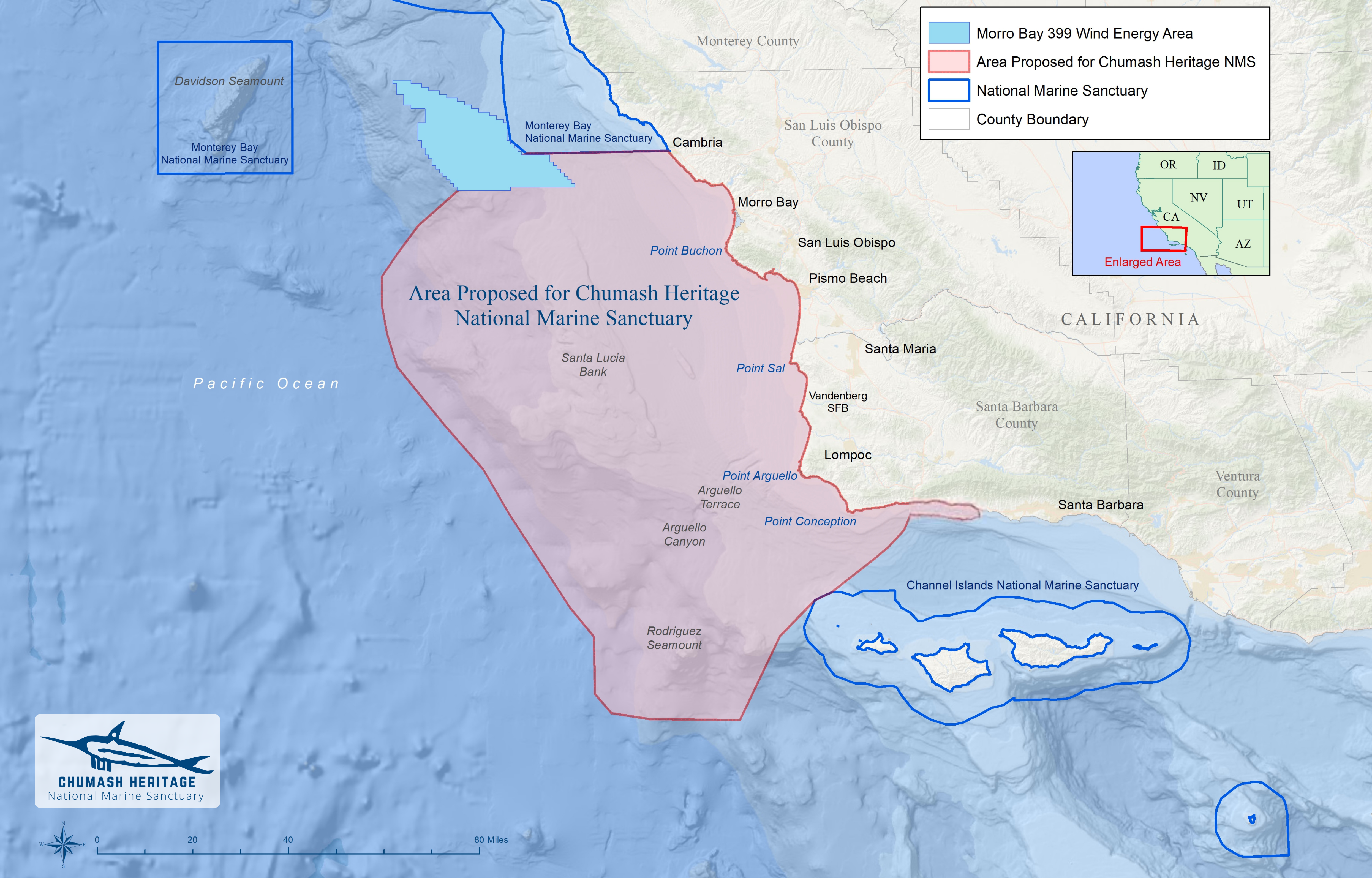
- Details
- By Jenna Kunze
A 7,500 square mile area off the central coast of California that includes ancestral Chumash sites and unique biodiversity was recognized this week as a Mission Blue Hope Spot.
The “Hope Spot” title, given by International marine conservation non-profit Mission Blue, is meant to identify “special places that are scientifically identified as critical to the health of the ocean.” They are often given to places that need protection, according to Mission Blue.
Which is why the proposed Chumash Heritage National Marine Sanctuary was chosen.The designation comes as The North Chumash tribe awaits a decision from the federal government about its bid to designate that same area as a marine sanctuary.
The Chumash people have occupied the central coast of California for more than 20,000 years, according to the Northern Chumash tribal records. The proposed sanctuary site—adjacent to San Luis Obispo and Santa Barbara counties and situated between two previously designated marine sanctuaries, Channel Islands and Monterey— would protect submerged villages of tribal ancestors.
Additionally, the area’s confluence of warm and cool waters make it a feeding ground for several threatened or engaged species, including blue whales, southern sea otters, black abalone, snowy plovers, and leatherback sea turtles. Notably, more than 40 historic shipwrecks have taken place within the proposed boundaries.
All of these are listed as reasons why the late Northern Chumash tribal chairman, Fred Collins, fought for this designation for many years. He penned the original sanctuary request in 2015.
Now, his successor and daughter, Tribal Council Chairwoman Violet Sage Walker, has taken on the decades-long fight. She previously told Native News Online that a successful sanctuary designation would be a step towards environmental justice.

Mission Blue has named the proposed Chumash Heritage National Marine Sanctuary a Hope Spot in support of the pending permanent federal designation that will safeguard the area’s marine habitats indefinitely from destructive activities, such as seabed mining and oil drilling, according to their website.
The National Oceanic and Atmospheric Administration (NOAA) is currently in the designation process for the Chumash Heritage Sanctuary, with a decision slated for mid-2024. NOAA held a public comment period that ended October 2023, where they received more than 110,000 comments from the public, 99% in support of the sanctuary designation.
More Stories Like This
Trump signs law that revokes some limits on drilling in Alaska’s National Petroleum ReserveSouthern Sierra Miwuk Nation Gets 900-Acres ofLand Back
Chilkat Indian Village Tells New Palmer Mine Owners They Are “Not Welcome” in Chilkat Valley
Tribes, Coastal Group Ask Army Corps to Revoke Permit for Texas Export Terminal
Michigan Tribes Tell Supreme Court: Don’t Bail Out Enbridge
Help us defend tribal sovereignty.
At Native News Online, our mission is rooted in telling the stories that strengthen sovereignty and uplift Indigenous voices — not just at year’s end, but every single day.
Because of your generosity last year, we were able to keep our reporters on the ground in tribal communities, at national gatherings and in the halls of Congress — covering the issues that matter most to Indian Country: sovereignty, culture, education, health and economic opportunity.
That support sustained us through a tough year in 2025. Now, as we look to the year ahead, we need your help right now to ensure warrior journalism remains strong — reporting that defends tribal sovereignty, amplifies Native truth, and holds power accountable.
 The stakes couldn't be higher. Your support keeps Native voices heard, Native stories told and Native sovereignty defended.
The stakes couldn't be higher. Your support keeps Native voices heard, Native stories told and Native sovereignty defended.
Stand with Warrior Journalism today.
Levi Rickert (Potawatomi), Editor & Publisher


